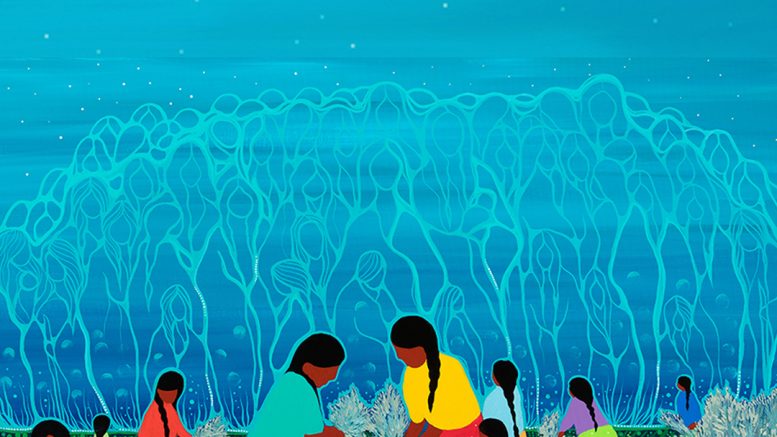The week of March 21 to March 25 was Health Equity Week in Manitoba. The purpose of the week was to acknowledge and work to improve the equitability of health-care services among diverse communities in Manitoba. The week’s events were supported by Shared Health, CancerCare Manitoba, the George and Fay Yee Centre for Healthcare Innovation, Healthcare Excellence Canada, Indigenous Health and all five Manitoban regional health authorities.
During Health Equity Week, the Manitoba Centre for Health Policy (MCHP) promoted recent scholarship that addresses the gap in equity between Manitobans. One such study highlighted by MCHP was “Our Children, Our Future: The Health and Well-being of First Nations Children in Manitoba.” This study, first released in 2020, was requested by Manitoba’s Healthy Child Committee of Cabinet to determine whether the calls to action set by the Truth and Reconciliation Commission have reduced health-care inequality in Manitoba.
Mariette Chartier, assistant professor in the department of community health sciences and senior research scientist at MCHP, and Leona Star, director of research at the First Nations Health and Social Secretariat of Manitoba (FNHSSM), spoke to the Manitoban about the report.
“Our role within many of [these] research projects is to provide that partnership, to demonstrate that partnership around First Nations self-determination as it relates to our own data, our own stories and our own truths, and being able to interpret those results according to our own understandings and worldview,” said Star.
The Truth and Reconciliation Commission’s call to action number 19 calls for the federal government to identify and address inequalities in health and medical care between Indigenous and non-Indigenous people living in Canada. The Commission also called for annual progress reports to assess progress toward this goal.
“However, without actually having a baseline of information or a baseline of wellness around First Nations people within Manitoba, it was really hard to measure whether or not that [equity] gap was increasing,” Star said.
Prior to undertaking the project, researchers knew First Nations people live 10 years less on average than all other Manitobans, and the gap was increasing. Researchers also knew major contributors to this gap were the impacts of colonization, racism, access to primary care, access to clean running water and access to housing.
“If you put it into the context of having 10 additional years with your loved one and how integral that is to your overall relationship [and] your overall wellness and to see their life cut short as a result of the impacts of colonization,” Star said.
Undertaking such a major, whole-population level study requires enormous forethought and reciprocity with stakeholders. The first step for the authors of the study was to gain consent from the health information research committee at the FNHSSM, which ensures research by and for First Nations is performed with free prior informed consent of individuals and on a collective basis, is conducted under the First Nations’ ethical standards, benefits the First Nations and follows OCAP principles. The OCAP principles ensure that the First Nations retain ownership, control, access and possession of the research conducted.
The project also required the approval of the University of Manitoba’s research ethics board and was subject to the same scrutiny as other research projects at the university.
From there, the researchers brought together the project’s knowledge keepers from the five distinct First Nations language groups in Manitoba, including Cree, Ojibway, Dakota, Ojibway-Cree and Dene. Star emphasized the importance of acknowledging the protective factors for children in each of the First Nations and celebrating the differences between the nations, rather than continuing to stigmatize and focus primarily on deficits.
The study used data from the Manitoba Population Research Data Repository held by MCHP. This data includes patients’ visits to hospitals and physicians, public school grades, graduation rates, prosecutions and court appearances, among other publicly collected data. However, these data sets measure health and the social determinants of health from a deficit perspective.
It is also important to recognize the resilience and strength of First Nations communities. Chartier recalled that Nora Murdock, with the Manitoba First Nations Education Resource Centre, “would always say, you know, ‘We have to make sure we put hope in there,’ because sometimes we would feel a little hopeless when we looked at those indicators.”
Researchers wanted to consider the wellness of children in a holistic sense. For example, many First Nations people are reclaiming the sacredness of birthing practices. The study found First Nations mothers received inferior prenatal care and had shorter post-natal hospital stays, meaning essential education opportunities for healthy childbirth are missed due to inappropriate care. Considering what supports the wellbeing of a child and how existing systems fail to meet those needs provides a clear path toward reducing inequalities in health.
“As parents, according to our knowledge keepers, and as a family, we all have a duty and responsibility to ensure that our children’s rights are protected and our children live their rights fully and fulfilled in every way,” Star said.


